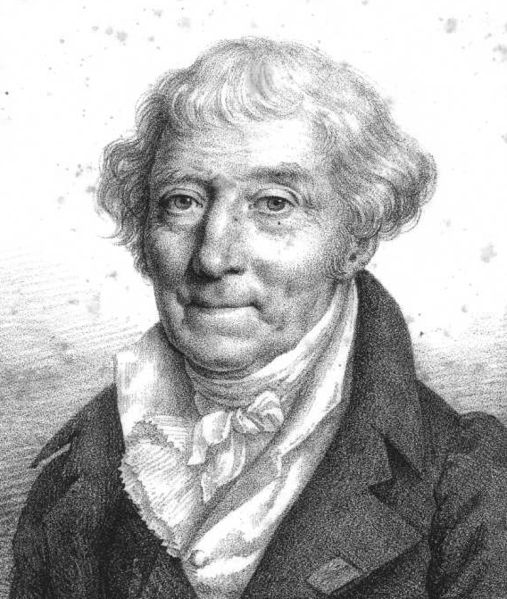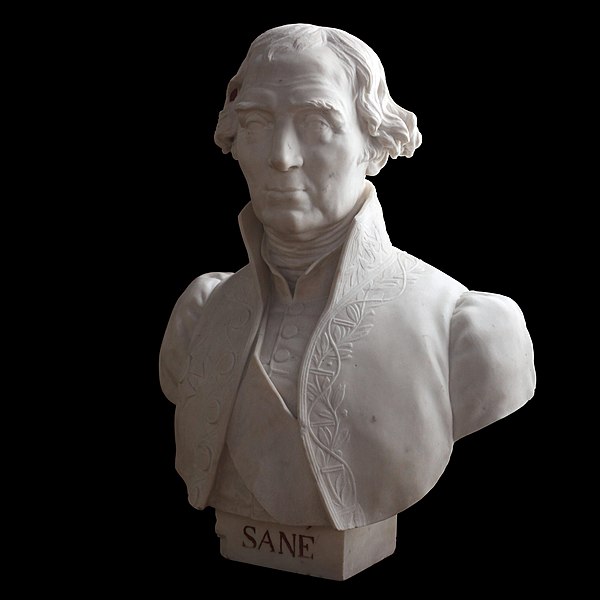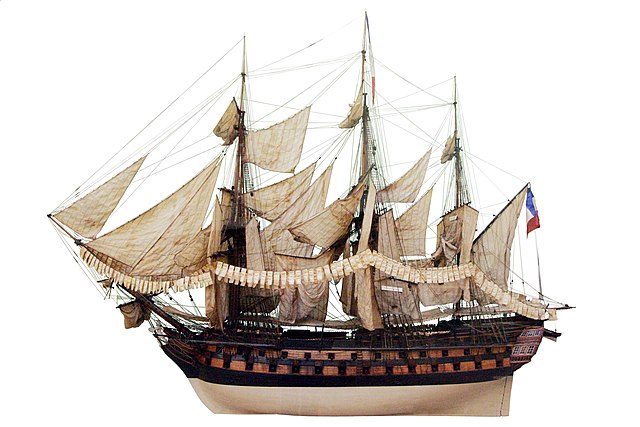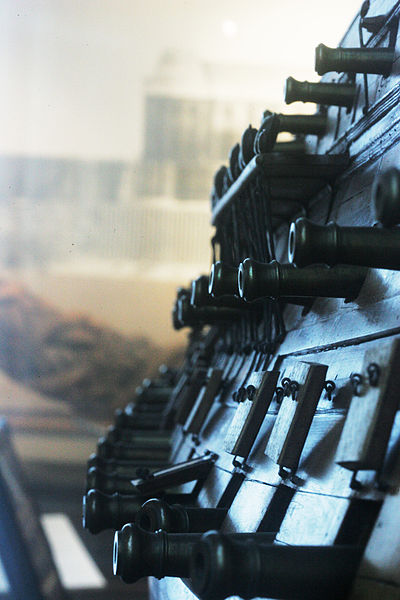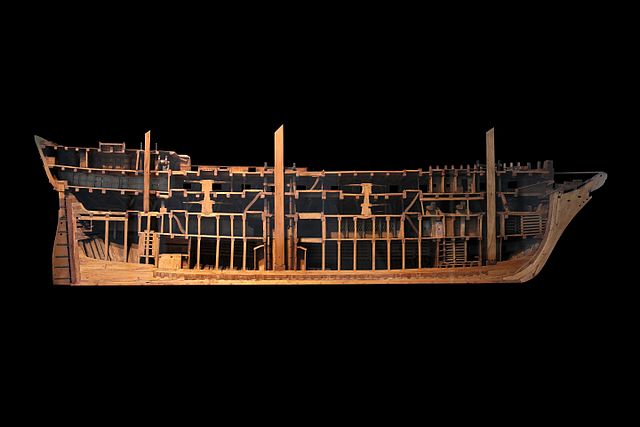Jacques-Noël Sané was a French naval engineer. He was the creator of standardised designs for ships of the line and frigates fielded by the French Navy in the 1780s, which served during the French Revolutionary Wars and the Napoleonic Wars and in some cases remained in service into the 1860s. Captured ships of his design were commissioned in the Royal Navy and even copied.
Lithograph portrait of Jacques-Nöel Sané by Julien Léopold Boilly.
Bust by Louis-Joseph Daumas, on display at the Musée national de la Marine in Paris.
The "seventy-four" was a type of two-decked sailing ship of the line, which nominally carried 74 guns. It was developed by the French navy in the 1740s, replacing earlier classes of 60- and 62-gun ships, as a larger complement to the recently developed 64-gun ships. Impressed with the performance of several captured French seventy-fours, the British Royal Navy quickly adopted similar designs, classing them as third rates. The type then spread to the Spanish, Dutch, Danish and Russian navies.
Scale model of Achille, a typical French seventy-four of the Téméraire class at the beginning of the 19th century.
Broadside of a French 74-gun ship from 1755 (1/24th scale model)
Inner arrangement of a Russian 74-gun ship. Elements of Sané's design are present, but with a British-style layout.
Geometric and scenographic projection of a Venetian 74-gun Leon Trionfante-class ship, late 18th century.

